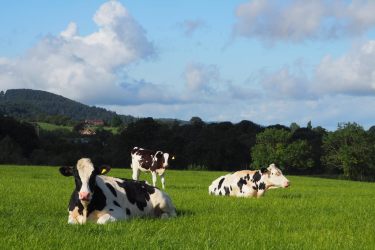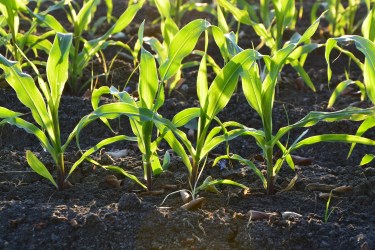By Tom Gill
2022! What lays ahead for this year? It can be difficult to predict where the industry will need to be in 12 months’ time, especially if the last two years are anything to go by.
What we do know, however, is that the industry is certainly not going to take its foot off the accelerator when it comes to sustainability and continuing to balance economic, social and environmental challenges. Now, more than ever, the number one priority for consumers, retailers and suppliers alike is the progression towards a more sustainable future.
Whether it be addressing nature decline, tackling climate change, reducing greenhouse gas emissions, improving air quality or creating ethical and profitable returns to reinvest in the future. Sustainability is, and will continue to, dominate the headlines.
Future-fit food and farming systems
The topic of sustainability at farm and food supply chain level has been particularly prominent following the aftermath of COP26, encouraging deeper discussions around methane and sustainable diets. The eye is now on Egypt as they prepare to host COP27, towards the back end of 2022.
It is evident delegates are more interested than ever in the positive, contributing role agriculture can play in meeting COP actions. However, steps need to be taken now rather than waiting to see the outcome of this upcoming summit. It is the actions we take this year, and how we take them, that will be crucial to the progression of a more sustainable, future-fit food and farming system.
Let’s delve deeper into some of the finer points that all businesses in the agri-food space should be thinking about in 2022:
Evaluating energy insecurities
We’ve seen a 50-60% increase in energy prices, and contracts will be hit hard from the middle of this year. The UK continues to be highly energy insecure and whilst there isn’t a significant proportion of emission ‘hotspots’ at farm level, it is a costly input. Reviewing practical steps to manage and reduce demand vs. consumption is really important.
Getting on top of greenhouse gases
The pressure to report on greenhouse gas emissions (GHG) continues at a great pace. Industry leaders are starting to set targets for producers to have an emission baseline for their farm or supply chain by the end of 2022. It’s an action that can no longer be ignored.
The journey needs to start now
If progress towards GHG reduction targets is going to be achieved, the actions and changes need to start quickly. Innovation for agriculture has released a practical guidebook to help farmers on their journey, recording step-by-step actions that can be taken by those who are at the very beginning and more inspirational measures for those who are well on their way to transformation.
At Promar, we have also supported a large number of customers (from both farm and supply chain level) to prioritise their two, five and ten year plan. This can only happen if you know your starting point by quantifying your emissions, regardless of which tool or model is used.
A commitment to restoring natural capital
We can’t talk about the year ahead without bringing up carbon removals, enhancing natural capital and carbon trading. They’re just a few key terms that have been thrown into the equation as UK land faces new demands to halt and reverse climate change.
Our advice, tread carefully and plan for the future. The lack of transparency of credits is a concern and losing control, as a farmer or landowner, is not a positive step when there are so many unknowns around the quality, regulation and clarity of how these schemes are generated. Not to mention, how they could apply to your business.
Furthermore, policy frameworks are needed to ensure appropriate structures are in place and don’t further exacerbate volatility at farm level. There is a fine balance to be achieved in creating financial opportunity from your natural assets whilst contributing to nature restoration and carbon storage.
Moving beyond one metric
There is a need to move beyond just emissions; this has been pointed out clearly by the Sustainable Food Trust and the National Food Strategy.
A whole-farm framework, such as the Global Farm Metric, will allow farmers to identify key areas where impact occurs, and where wider sustainable practices can be implemented. From social capital to animal husbandry, plant and crop health to nutrient management, this metric offers a common way to measure the impact of agriculture and establish a common baseline of data.
In summary
While there is a lot to think about, and elements to consider, in your 2022 plan, the number one thing that will be key for the progression of the industry is communication and collaboration.
Telling the positive story of key food products and the journey they take from farm to fork will be critical. We can take the very recent ‘we eat balanced’ campaign by AHDB as an example. It is designed to present the nutritional benefits of dairy, beef, pork and lamb, and bust the myths around food and farming standards.
Working collaboratively to spread messages like this will drive positive change across the food and farming sector. That’s certainly a key objective to strive towards this year!







